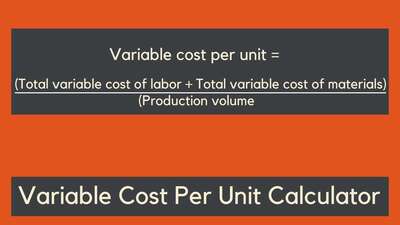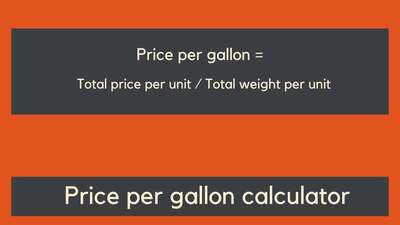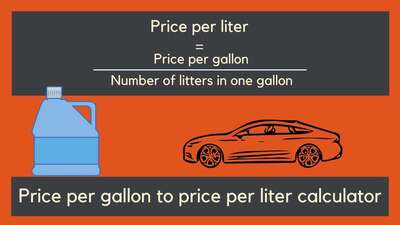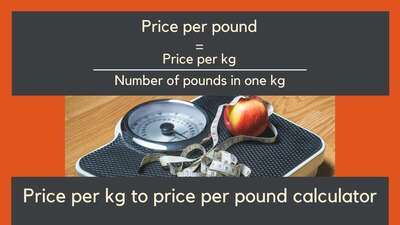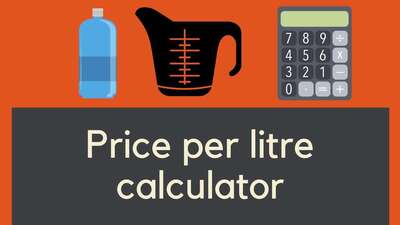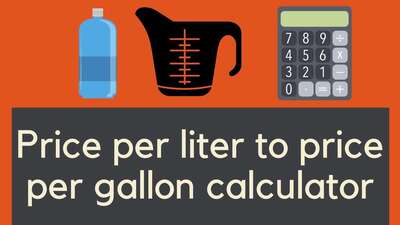Online Factoring Calculator: Definition, Formula, Examples, and FAQ

- Definition of Factoring
- Formula for Factoring
- Examples of Factoring Problems
- Online Factoring Calculator FAQ
- Benefits of Using an Online Factoring Calculator
- Advanced Factoring Techniques
- Limitations of Factoring Calculators
- Limitations of Factoring Calculators
- The Importance of Manual Factoring Skills
- Incorporating Technology into Learning
- Conclusion
If you are a student or professional who deals with numbers every day, you might have come across factoring at some point. Factoring is the process of breaking down a number or expression into its factors. It is an essential concept in mathematics, and it has many practical applications in fields like algebra, calculus, and engineering. Factoring can be done by hand, but it can be time-consuming and error-prone. That's where an online factoring calculator can be helpful. In this article, we will define what factoring is, provide the formula for factoring, give examples of factoring problems, and answer frequently asked questions about factoring calculators.
Definition of Factoring
Factoring is the process of finding two or more numbers that multiply together to give a given number or algebraic expression. The numbers that multiply together are called factors. Factoring is the opposite of multiplication. When you multiply two numbers or expressions, you get a single number or expression. When you factor a number or expression, you break it down into two or more smaller numbers or expressions.
Formula for Factoring
The formula for factoring depends on the type of expression you are trying to factor. Here are some common types of expressions and their corresponding factoring formulas:
Factoring a quadratic expression
A quadratic expression is an expression of the form ax² + bx + c, where a, b, and c are constants. To factor a quadratic expression, you can use the following formula:
ax² + bx + c = (mx + n)(px + q)
where m, n, p, and q are constants that you need to find. One way to find these constants is to use the quadratic formula, which is:
x = (-b ± √(b² - 4ac)) / 2a
Once you have found the values of m, n, p, and q, you can use them to factor the quadratic expression.
Factoring a polynomial expression
A polynomial expression is an expression of the form axⁿ + bxⁿ⁻¹ + ... + kx + l, where a, b, ..., k, and l are constants, and n is a positive integer. To factor a polynomial expression, you can use the following formula:
axⁿ + bxⁿ⁻¹ + ... + kx + l = (mx + n)(pxⁿ⁻¹ + qxⁿ⁻² + ... + rx + s)
where m, n, p, q, ..., r, and s are constants that you need to find. One way to find these constants is to use long division or synthetic division.
Examples of Factoring Problems
Here are some examples of factoring problems and how to solve them:
Example 1: Factoring a quadratic expression
Factor the expression x² + 6x + 9.
Solution:
x² + 6x + 9 = (x + 3)(x + 3) = (x + 3)²
Explanation: We can see that x² + 6x + 9 is a perfect square trinomial because the first and last terms are perfect squares, and the middle term is twice the product of the square roots of the first and last terms. Therefore, we can factor the expression as the square of the binomial (x + 3).
Example 2: Factoring a polynomial expression
Factor the expression 2x³ + 6x² - 12x.
Solution:
2x³ + 6x² - 12x = 2x(x² + 3x - 6) = 2x(x + 6)(x - 1)
Explanation: We can factor out the greatest common factor of 2x from the expression. Then, we can use the factoring formula for quadratic expressions to factor the trinomial x² + 3x - 6 into (x + 6)(x - 1).
Online Factoring Calculator FAQ
Here are some frequently asked questions about online factoring calculators:
Q: What is an online factoring calculator?
A: An online factoring calculator is a tool that can factor a number or expression for you. You enter the number or expression into the calculator, and it will give you the factors as the output. Online factoring calculators can save you time and reduce errors compared to doing factoring by hand.
Q: How do I use an online factoring calculator?
A: To use an online factoring calculator, you need to enter the number or expression you want to factor into the calculator's input field. Then, click the "Factor" button or press the "Enter" key. The calculator will then show you the factors of the number or expression as the output.
Q: Can online factoring calculators factor any expression?
A: No, online factoring calculators can only factor certain types of expressions. For example, most online factoring calculators can factor quadratic expressions and some polynomial expressions, but they may not be able to factor more complex expressions. It is always a good idea to check the calculator's capabilities before using it.
Q: Are online factoring calculators accurate?
A: Online factoring calculators are generally accurate, but there may be some rounding errors or other issues that can affect the results. It is always a good idea to double-check the results of the calculator by factoring the expression by hand or using a different calculator.
Benefits of Using an Online Factoring Calculator
The evolution of technology has transformed many aspects of our lives, including the realm of mathematics. One notable advancement is the advent of online factoring calculators. These digital tools have revolutionized the way we approach mathematical tasks, such as factoring.
An online factoring calculator offers a myriad of benefits to its users:
- Convenience: With just an internet connection, you can factor numbers or expressions from the comfort of your home, classroom, office, or even on the go. This flexibility is invaluable for students seeking quick solutions during late-night study sessions or professionals needing immediate answers amidst tight schedules.
- Speed: Time is of the essence in today's fast-paced world. Online factoring calculators provide rapid results, eliminating the need to spend extended periods performing manual calculations. Within mere seconds, you have your answers ready!
- Educational Value: Many of these calculators are equipped with built-in tutorials or step-by-step breakdowns of the factoring process. This feature is not just about getting the answer; it's about understanding the journey to that answer. By following along, users can reinforce their grasp of the concept, making the learning process more holistic and enriching.
In conclusion, as the world continues to embrace digital transformation, tools like online factoring calculators stand out as beacons of progress, making mathematical endeavors more accessible and comprehensible for everyone.
Advanced Factoring Techniques
Factoring, at its core, is a foundational concept in mathematics. While many are familiar with the basic factoring of quadratic and polynomial expressions, the mathematical landscape offers much more intricate techniques, especially as one delves deeper into advanced subjects.
Some notable advanced factoring techniques include:
- Difference of Squares: This method is a staple in algebraic manipulations. It allows mathematicians to factor expressions of the form \(a^2 - b^2\) into \((a+b)(a-b)\). For example, \(x^2 - 9\) can be factored as \((x+3)(x-3)\).
- Multiple Variables: Factoring becomes even more intricate when dealing with expressions containing more than one variable. Techniques and patterns specific to multi-variable factoring are often introduced and explored in depth in advanced algebra courses.
- Higher Powers: As the power or degree of the expressions increases, so does the complexity of factoring them. There are specialized strategies for handling expressions with higher powers, equipping students and professionals to tackle a broader array of problems.
It's imperative to understand that as you journey further into the world of mathematics, these advanced techniques open doors to a vast realm of solvable problems, enriching the mathematical experience and offering solutions to previously daunting challenges.
Limitations of Factoring Calculators
While factoring calculators provide significant aid in mathematical computations, they are not without their limitations. Recognizing these constraints is essential to ensure balanced reliance on technology while preserving the essence of mathematical understanding.
Limitations of Factoring Calculators
The rise of technology has seen the advent of numerous online tools designed to simplify complex tasks. Online factoring calculators are one such boon to the mathematical world, offering a multitude of benefits. However, like all tools, they come with their set of caveats.
- Over-reliance: One of the most glaring drawbacks of using factoring calculators is the potential for over-reliance. Relying solely on these tools can create a chasm between the user and the core mathematical concepts. When students or professionals bypass the essential steps of understanding and internalizing mathematical processes, it can lead to a superficial grasp of the subject.
- Handling Complexity: While these calculators are designed to process a wide spectrum of expressions, they have their bounds. Extremely intricate problems or those demanding a nuanced human touch might confound the algorithms of these tools. As a result, users might receive incomplete or, in rare cases, inaccurate solutions.
- Usability Concerns: Many online factoring tools are available for free, which is certainly an advantage from a cost perspective. However, this often means they are supported by advertisements. These ads can be distracting, especially when one is trying to focus on complex mathematical problems. Additionally, not all calculators boast user-friendly interfaces. Some might be cluttered or unintuitive, posing navigational challenges for users.
In conclusion, while online factoring calculators are undeniably beneficial, it's essential to approach them with awareness of their limitations. Striking a balance between leveraging these tools and cultivating a deep understanding of mathematics ensures a holistic and enriched learning experience.
The Importance of Manual Factoring Skills
In the digital age, where technology continually presents us with tools designed to simplify tasks, it's easy to be seduced by the sheer convenience they offer. Among these tools, online factoring calculators have emerged as a favorite for many diving into mathematical problems. However, traditional, hands-on mathematical skills have an inherent value that remains unparalleled.
- Reinforced Understanding: Factoring by hand compels individuals to engage deeply with the problem, fostering a clear conceptual grasp. This hands-on approach aids in the internalization of core principles, making them second nature to the practitioner.
- Pattern Recognition: As one factors manually, they become adept at spotting patterns and subtleties in mathematical expressions. This acquired knack not only speeds up problem-solving but also enhances analytical skills, as the brain is continuously trained to discern patterns.
- Fostering Independence: Building proficiency in manual factoring ensures that one isn't overly reliant on digital tools. This independence is especially crucial in scenarios where technology might be inaccessible or deemed inappropriate, such as during academic examinations or in specific professional settings.
- Foundational Strength: Much like constructing a building, a robust foundation is pivotal. Manual factoring solidifies one's mathematical base, ensuring that subsequent, more advanced concepts can be grasped with ease, as they often build upon foundational skills.
While it's tempting to lean heavily on digital conveniences, a balanced approach is key. Embracing the benefits of online tools, while also investing time and effort into honing manual skills, paves the way for a comprehensive, well-rounded mathematical journey.
Incorporating Technology into Learning
The 21st century has witnessed an unprecedented integration of technology into various spheres of our lives, with education being a primary beneficiary. As exemplified by digital tools like online factoring calculators, the landscape of learning is continually being reshaped to align with the technological era.
- Immediate Feedback: One of the standout benefits of digital tools is their ability to offer instant feedback. This immediacy enables learners to identify and rectify mistakes in real-time, ensuring consistent improvement and a deeper understanding of the subject matter.
- Self-paced Learning: Everyone learns at their own pace. Digital tools cater to this individuality, allowing students to progress through material at a speed that matches their comfort and comprehension levels. This customization can lead to a more thorough and nuanced understanding of topics.
- Abundance of Resources: Many online tools come equipped with supplementary resources such as tutorials, video explanations, and forums. These added assets can be invaluable for clarifying doubts, providing alternative explanations, or delving deeper into specific topics.
- Blended Learning: Technology doesn't replace traditional teaching methods; it complements them. When educators integrate digital tools into their curriculum, they pave the way for a blended learning approach. This synergy of traditional and modern methods ensures a holistic educational experience, balancing foundational understanding with innovative techniques.
As the field of education continues to evolve, the interplay between technology and traditional learning will become increasingly significant. By strategically incorporating digital tools, we can ensure that learners are not only rooted in foundational concepts but are also adept at leveraging modern resources to excel in the dynamic world of mathematics.
Conclusion
Factoring is an important concept in mathematics, and it has many practical applications. An online factoring calculator can save you time and reduce errors when factoring numbers or expressions. In this article, we defined what factoring is, provided the formula for factoring, gave examples of factoring problems, and answered frequently asked questions about online factoring calculators. If you need to factor a number or expression, an online factoring calculator can be a useful tool to have in your arsenal.





![Car Loan Calculator: Definition, Formula, Examples, and FAQs [2023 Guide]](/images/page/400/car-loan-calculator-13.jpg)










